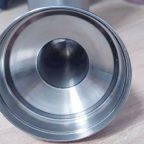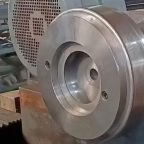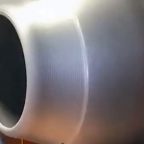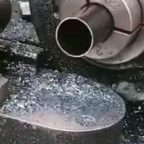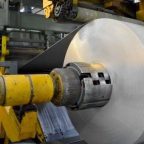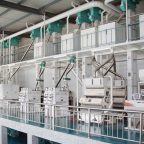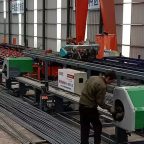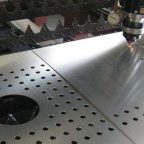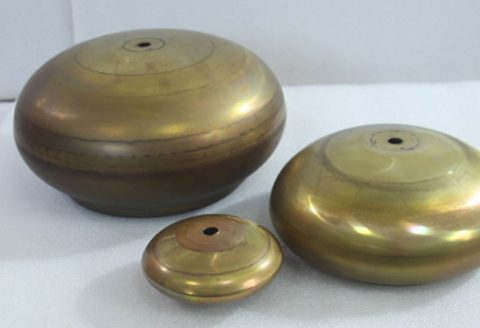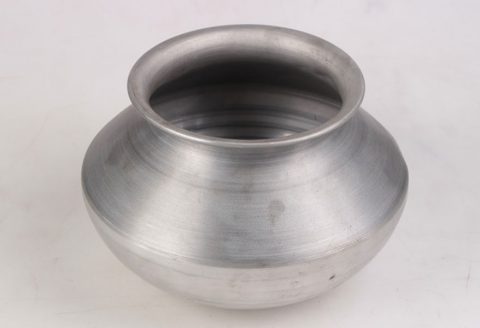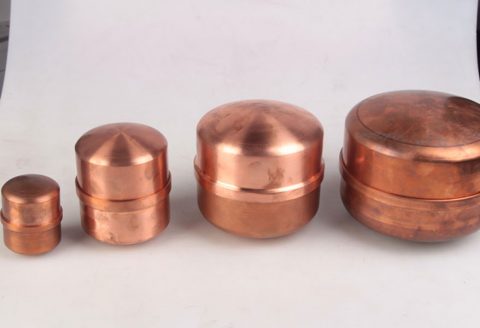
Metal spinning, also known as spin forming or metal turning, is a metalworking process that transforms flat sheet metal or tubular blanks into seamless, axially symmetric components through a combination of rotational motion and localized force. This ancient technique, with origins tracing back to Ancient Egypt, has evolved into a sophisticated manufacturing method widely utilized across industries such as aerospace, automotive, medical, and consumer goods. The hallmark of metal spinning is its ability to produce seamless products—components without welds or joints—that offer superior structural integrity, enhanced mechanical properties, and versatility in design. Seamless products are critical in applications where high internal or external pressures, corrosion resistance, or aesthetic precision are paramount. This article explores the mechanics, applications, advantages, and recent advancements in metal spinning, emphasizing its role in producing seamless products. Detailed comparisons with alternative forming processes and comprehensive tables highlight its unique position in modern manufacturing.
Historical Context
Metal spinning is one of humanity’s oldest metalworking techniques, with evidence of its use in Ancient Egypt for crafting soft metals like gold and copper into decorative objects. By the Middle Ages, the process had spread to Europe and Asia, where it was used to produce household items such as cooking pots and decorative vessels. The industrial revolution marked a turning point, with advancements in hydro and steam power enabling the spinning of harder metals like brass and aluminum. By the early 20th century, the advent of electric motors and CNC (Computer Numerical Control) technology transformed metal spinning into a precise, repeatable process suitable for industrial applications. Today, metal spinning combines traditional craftsmanship with modern automation, making it a versatile and cost-effective method for producing seamless components.
Need for Seamless Products
Seamless products are essential in industries where structural integrity and reliability are non-negotiable. Welded or joined components often introduce weak points that reduce strength, increase susceptibility to corrosion, or compromise performance under pressure. For example, in aerospace, seamless jet engine components must withstand extreme temperatures and pressures without failure. In the medical industry, seamless containers and implants ensure hygiene and durability. The need for seamless products stems from their ability to maintain uniform material properties, resist fatigue, and meet stringent regulatory standards. Metal spinning addresses this need by producing parts without seams, refining the metal’s grain structure, and enhancing mechanical properties such as tensile strength and hardness.
Objective of the Article
This article aims to provide a comprehensive overview of metal spinning as a preferred method for producing seamless products. It covers the mechanics of the process, material selection, types of spinning, applications across industries, and comparisons with alternative forming methods. Recent advancements, including finite element analysis (FEA) and process optimization, are discussed to highlight the scientific evolution of the technique. The article includes detailed tables comparing metal spinning with other processes, material properties, and recent research findings to provide a rigorous, data-driven perspective.
Fundamentals of Metal Spinning
Definition and Process Overview
Metal spinning is a chipless forming process that involves rotating a metal blank (typically a flat disc or tube) at high speed while applying localized force through a roller or tool to shape it against a mandrel. The mandrel, a solid form that defines the internal profile of the finished part, is clamped to the blank and rotated on a lathe. As the roller moves along the blank, it induces plastic deformation, causing the metal to flow and conform to the mandrel’s shape. The process can be performed manually or using CNC lathes, with the latter offering greater precision and repeatability. Unlike other forming methods like stamping or forging, metal spinning does not remove material, resulting in minimal waste and high material utilization.
The process is classified into three main types: conventional spinning, shear spinning, and tube spinning. Each type varies in its effect on the workpiece’s wall thickness and is suited to different applications. Conventional spinning maintains a nearly constant wall thickness, making it ideal for seamless products like cookware and decorative items. Shear spinning reduces wall thickness by applying significant shear forces, suitable for lightweight aerospace components. Tube spinning shapes tubular blanks, often used for seamless pipes or cylinders.
Mechanics of Metal Spinning
The mechanics of metal spinning involve complex interactions of tensile, compressive, and shear stresses. As the roller contacts the rotating blank, it induces localized plastic deformation, causing the metal to flow circumferentially and axially. The process can be described as a combination of forging, extrusion, and stretching, with the roller’s path and force determining the final geometry. Key parameters include mandrel speed, roller feed rate, roller geometry, and material properties. The stress and strain distribution during spinning is non-uniform, with high strains occurring at the contact point between the roller and blank. Finite element analysis (FEA) has been instrumental in modeling these interactions, revealing that the stress state evolves dynamically throughout the process, influencing part quality and potential defects like wrinkling or cracking.
The primary advantage of metal spinning’s mechanics is its ability to produce seamless parts with refined grain structures. The deformation process aligns the metal’s microstructure, enhancing tensile strength and hardness. For example, spun parts exhibit improved mechanical properties due to work hardening and grain refinement, making them suitable for high-pressure applications like gas cylinders.
Types of Metal Spinning
Conventional Spinning
Conventional spinning maintains the blank’s original wall thickness, making it ideal for producing seamless products with uniform thickness, such as satellite nose cones, cookware, and musical instruments. The process involves multiple passes of the roller, gradually shaping the blank onto the mandrel. It is highly flexible, allowing for rapid prototyping and small-batch production.
Shear Spinning
Shear spinning reduces the wall thickness of the blank through significant shear forces, producing lightweight, high-strength components. It is commonly used in aerospace for parts like jet engine cones and in automotive applications for wheel hubs. The process requires precise control of roller force and feed rate to prevent defects like wrinkling or tearing. Shear spinning is particularly effective for hard-to-deform materials like Inconel or titanium alloys.
Tube Spinning
Tube spinning shapes tubular blanks into seamless cylindrical components, such as pipes, pressure vessels, and artillery shells. It can be performed as forward or backward spinning, depending on the direction of material flow relative to the roller. Tube spinning is critical for applications requiring high-pressure resistance, such as hydrogen storage containers.
Material Selection for Metal Spinning
The success of metal spinning depends heavily on the material’s properties, including ductility, elongation, and work-hardening behavior. Commonly spun materials include:
- Aluminum: Highly ductile with an elongation of up to 30%, aluminum is ideal for cold spinning due to its low strength and corrosion resistance. Applications include aerospace components and decorative items.
- Copper: With an elongation of around 45%, copper is highly formable but requires frequent annealing due to work hardening. It is used for musical instruments and electrical components.
- Brass: An alloy of copper and zinc with elongation up to 64%, brass offers good formability and corrosion resistance, making it suitable for decorative hardware.
- Stainless Steel: Austenitic grades like 304 have high elongation (up to 68%) and are used for durable, corrosion-resistant parts in medical and industrial applications. Hot spinning is often required for high-strength stainless steels.
- Titanium Alloys: Used in aerospace for their high strength-to-weight ratio, titanium alloys require hot spinning due to their low ductility at room temperature.
- Magnesium Alloys: Challenging to spin at room temperature due to their hexagonal crystal structure, magnesium alloys are spun at elevated temperatures (e.g., 522 K) for automotive wheel hubs.
Material selection involves balancing formability, strength, and cost. For example, aluminum’s recyclability makes it environmentally friendly, while stainless steel’s durability suits demanding applications. Post-processing, such as annealing or surface finishing, may be required to optimize properties.
Applications of Metal Spinning
Aerospace Industry
Metal spinning is widely used in aerospace for producing seamless, lightweight components that withstand extreme conditions. Examples include jet engine cones, satellite nose cones, and radar reflectors. The process’s ability to form high-strength materials like titanium and Inconel into seamless shapes ensures reliability under high pressure and temperature. For instance, shear spinning is used to produce thin-walled cones with precise dimensional accuracy, reducing weight without compromising strength.
Automotive Industry
In the automotive sector, metal spinning produces seamless wheel hubs, connecting rods, and exhaust components. The process’s flexibility allows for rapid prototyping of lightweight parts, aligning with the industry’s focus on fuel efficiency and reduced emissions. Magnesium alloy wheel hubs, for example, are spun using optimized process parameters to minimize wall thickness deviation and internal warpage.
Medical Industry
Seamless medical components, such as surgical instrument containers and implants, benefit from metal spinning’s ability to produce hygienic, corrosion-resistant parts. Stainless steel and titanium are commonly used due to their biocompatibility and durability. The absence of seams eliminates potential contamination points, meeting stringent regulatory standards.
Consumer Goods and Decorative Applications
Metal spinning is used to create seamless cookware, musical instruments (e.g., cymbals), and decorative items like vases and lampshades. The process’s ability to produce intricate, polished surfaces makes it ideal for aesthetic applications. Materials like copper and brass are favored for their formability and visual appeal.
Defense and Industrial Applications
Seamless gas cylinders, artillery shells, and hydraulic cylinders are produced using tube spinning to ensure high-pressure resistance. The process’s ability to form hard-to-deform materials like aluminum alloys (e.g., 7075) makes it suitable for defense applications. Recent advancements, such as step-by-step boring-necking-spinning, have improved the production of thin-walled, thick-mouthed gas cylinders.
Advantages of Metal Spinning for Seamless Products
Structural Integrity
Seamless products produced by metal spinning exhibit superior structural integrity due to the absence of welds or joints. This eliminates weak points, reducing the risk of failure under pressure or fatigue. The process also refines the metal’s grain structure, enhancing tensile strength, toughness, and hardness. For example, spun parts can withstand higher internal pressures than welded components, making them ideal for pressure vessels.
Material Efficiency
Metal spinning is a near-net-shape process, meaning it produces parts close to their final dimensions with minimal material waste. Unlike machining, which removes material, spinning deforms the blank without loss, achieving material utilization rates of up to 90%. This efficiency reduces costs and supports sustainable manufacturing.
Cost-Effectiveness
The tooling for metal spinning is simpler and less expensive than for stamping, forging, or casting. Soft tooling (e.g., wooden mandrels) can be used for low-volume production, while harder tooling supports large-scale runs. The process’s low setup costs make it ideal for prototyping and small-batch production.
Flexibility and Rapid Prototyping
Metal spinning allows for quick modifications to part geometry by adjusting the mandrel or toolpath. This flexibility supports rapid prototyping and iterative design, enabling manufacturers to test and refine components efficiently. CNC spinning further enhances repeatability, making it suitable for both custom and mass production.
Enhanced Mechanical Properties
The plastic deformation in metal spinning aligns the metal’s microstructure, improving mechanical properties. For example, spun aluminum parts exhibit increased tensile strength due to grain refinement, making them suitable for high-stress applications.
Comparison with Alternative Forming Processes
Metal spinning is one of several methods for producing axisymmetric components. Below, it is compared with deep drawing, hydroforming, forging, and casting, highlighting its advantages for seamless products.
Deep Drawing
Deep drawing uses a punch and die to form sheet metal into cup-like shapes. While effective for high-volume production, it requires expensive tooling and is less flexible than spinning. Deep drawing can produce seamless parts but is limited to simpler geometries and may introduce residual stresses.
Hydroforming
Hydroforming uses pressurized fluid to shape metal against a die, producing complex geometries with high precision. However, it requires costly equipment and is less suitable for small-batch production. Metal spinning offers lower tooling costs and greater flexibility for seamless components.
Forging
Forging involves compressive forces to shape metal, producing high-strength parts. However, it is less suited for thin-walled, seamless components and requires expensive dies. Metal spinning achieves similar strength through grain refinement with lower tooling costs.
Casting
Casting produces parts by pouring molten metal into a mold, allowing for complex shapes. However, cast parts often have seams or porosity, reducing strength. Metal spinning ensures seamless, high-strength components with minimal material waste.
Comparative Table
The following table compares metal spinning with alternative forming processes based on key criteria:
| Criteria | Metal Spinning | Deep Drawing | Hydroforming | Forging | Casting |
|---|---|---|---|---|---|
| Seamless Capability | Yes, produces seamless parts | Yes, seamless for simple shapes | Yes, seamless for complex shapes | Limited, seams possible | Limited, seams or porosity common |
| Tooling Cost | Low (soft or hard tooling) | High (punch and die) | High (pressurized dies) | High (dies) | Moderate (molds) |
| Material Waste | Minimal (near-net-shape) | Moderate (trimming required) | Moderate (trimming required) | High (material removal) | High (sprues, runners) |
| Flexibility | High (rapid prototyping, easy tool changes) | Low (fixed tooling) | Moderate (complex dies) | Low (fixed dies) | Moderate (mold modifications) |
| Production Volume | Low to medium, scalable to high | High (mass production) | Medium to high | High (mass production) | High (mass production) |
| Material Suitability | Aluminum, copper, brass, stainless steel, titanium | Aluminum, steel, copper | Aluminum, steel, titanium | Steel, aluminum, titanium | Most metals, alloys |
| Mechanical Properties | Enhanced (grain refinement) | Good (some residual stresses) | Good (uniform deformation) | Excellent (high strength) | Moderate (potential defects) |
| Applications | Aerospace, automotive, medical, consumer goods | Automotive, appliances | Automotive, aerospace | Automotive, aerospace | General engineering, decorative |
| Cost per Part | Low for low/medium volumes | Low for high volumes | High (equipment costs) | High (tooling and setup) | Moderate (mold costs) |
This table illustrates metal spinning’s advantages in producing seamless parts with low tooling costs and high flexibility, making it ideal for prototyping and small-batch production.
Recent Advancements in Metal Spinning
Finite Element Analysis (FEA)
Finite element analysis has revolutionized the study of metal spinning by enabling detailed modeling of stress, strain, and material flow. FEA simulations, such as those conducted using MSC Simufact.Forming, have optimized process parameters for deep cylinder spinning, reducing wall thickness deviation and spinning force. For example, a study on 3103 aluminum alloy cylinders identified optimal parameters (mandrel speed: 500 rpm, feed rate: 1 mm/rev, roller fillet radius: 6 mm, angle of attack: 35°) to minimize radial and tangential forces.
Process Optimization
Statistical methods like Gray Relational Analysis (GRA) have been used to optimize spinning parameters for magnesium alloy wheel hubs. A two-pass heterogeneous spinning model reduced wall thickness deviation by 28.84% and internal warpage by 4.88%, demonstrating the potential for high-quality seamless products.
Mandrel-Free Spinning
Mandrel-free spinning, a recent innovation, uses numerically controlled rollers instead of a mandrel to form non-axisymmetric shapes. This reduces lead time, material costs, and tooling requirements while maintaining seamless integrity. FEA models have validated the stress distribution and wrinkling mechanisms in this process, paving the way for broader applications.
Hot Spinning
Hot spinning, used for high-strength materials like titanium and magnesium alloys, involves heating the blank to improve formability. For example, hot spinning of Al-Mg-Si alloys at 572 K minimizes wrinkles and ensures uniform wall thickness in hydrogen storage containers.
Table of Recent Research Findings
The following table summarizes recent advancements in metal spinning based on published studies:Recent Advancements in Metal SpinningmarkdownShow inline
These advancements highlight metal spinning’s evolution into a scientifically grounded process, with ongoing research addressing gaps in microstructure evolution, failure prediction, and toolpath design.
Challenges and Limitations
Process Complexity
Metal spinning involves complex interactions of process parameters, material properties, and toolpaths, making it challenging to predict outcomes without advanced modeling. Wrinkling, cracking, and wall thickness variations are common defects, particularly in shear spinning and hard-to-deform materials.
Material Constraints
Materials with low ductility, such as magnesium alloys, require hot spinning, increasing energy costs and process complexity. High-strength materials like titanium demand precise temperature control to prevent cracking.
Knowledge Gaps
Despite advancements, gaps remain in understanding the evolution of stress, strain, and microstructure during spinning. Long simulation Hawkins simulation times and fine mesh requirements limit detailed analysis, hindering failure prediction and toolpath optimization.
Conclusion
Future research in metal spinning focuses on addressing these challenges through advanced modeling, automation, and material innovation. Machine learning and AI are being explored for real-time process control and toolpath generation. Novel materials, such as metal matrix composites, are being tested for spinning applications. Additionally, sustainable practices, such as using recycled aluminum, are gaining traction to align with environmental goals.
Metal spinning is a versatile, cost-effective, and material-efficient process for producing seamless products with superior structural integrity and enhanced mechanical properties. Its applications span aerospace, automotive, medical, and consumer goods, driven by its ability to form complex, high-strength components with minimal waste. Recent advancements, including FEA, process optimization, and mandrel-free spinning, have expanded its capabilities, while ongoing research addresses remaining challenges. As industries demand lightweight, durable, and seamless components, metal spinning remains a critical manufacturing technique, blending ancient craftsmanship with modern precision.
Maximize Tooling and CNC Metal Spinning Capabilities.

At BE-CU China Metal Spinning company, we make the most of our equipment while monitoring signs of excess wear and stress. In addition, we look into newer, modern equipment and invest in those that can support or increase our manufacturing capabilities. Our team is very mindful of our machines and tools, so we also routinely maintain them to ensure they don’t negatively impact your part’s quality and productivity.
Talk to us today about making a rapid prototype with our CNC metal spinning service. Get a direct quote by chatting with us here or request a free project review.
BE-CU China CNC Metal Spinning service include : CNC Metal Spinning,Metal Spinning Die,Laser Cutting, Tank Heads Spinning,Metal Hemispheres Spinning,Metal Cones Spinning,Metal Dish-Shaped Spinning,Metal Trumpet Spinning,Metal Venturi Spinning,Aluminum Spinning Products,Stainless Steel Spinning Products,Copper Spinning Products,Brass Spinning Products,Steel Spinning Product,Metal Spinnin LED Reflector,Metal Spinning Pressure Vessel,
